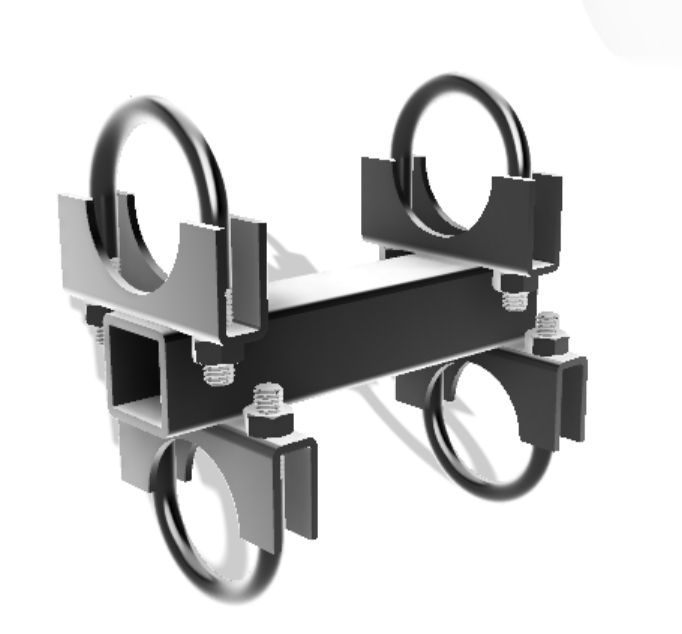I normally try to keep the antenna and support pole as close as possible. This is the type of clamp system I often fabricate. By selecting clamp sizes to suit, the same design works on almost any size pole and any size antenna.
I know there are better designs but it’s quick to fabricate.
